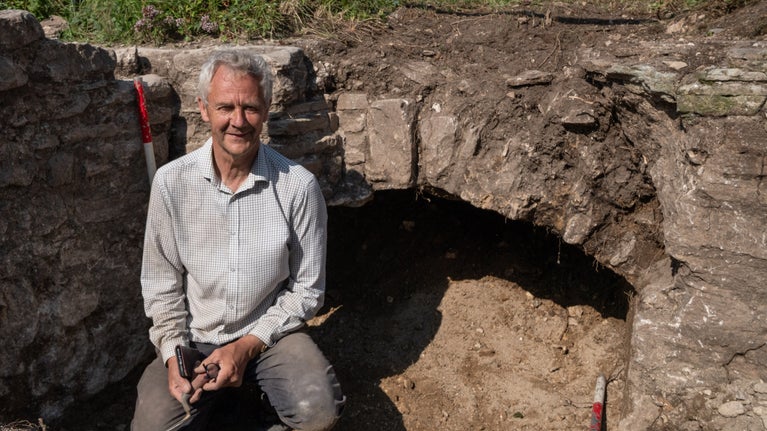Replacing loose or fallen stones
Despite our best efforts, periodically stones can come loose. Dedicated staff undertake regular inspections where any loose stones are recorded, carefully stored, and kept safe until our specialist stone masons can restore them to their original positions.
Stonework conservation
Repointing involves repairing and replacing damaged mortar, the binding material between stones. It is crucial to maintain the stability of the walls to prevent water from infiltrating. Corfe Castle was built with lime mortar, and we ensure the correct mix is used through careful analysis of the existing mortar, and sourcing clay from an original quarry.
Soft capping
We use soft capping, a technique using vegetation to protect exposed wall tops. It prevents rainwater and moisture from damaging the walls while allowing moisture to escape, protecting against freeze/thaw damage and erosion. Soft capping also adapts to a changing climate, continuing to protect the castle for generations to come.
Harling and hearting
Harling is a technique involving the application of a lime mortar finish to protect the exposed internal core of the walls. Over time, this mortar deteriorates and needs reapplication.
Hearting involves using small stones to fill gaps between the external stone layers of the wall, with larger stones at the bottom and smaller ones at the top. Over time, these stones and the mortar can come loose. Part of our conservation work is to reinstate missing hearting.
Vegetation removal
Some types of vegetation can damage the castle's fabric. Ivy and valerian, for example, can take root in cracks and crevices within the damaged walls, weakening the structure. Removing these plants is an ongoing challenge. Our dedicated staff can only reach so high, so specialist conservationists are brought in to remove vegetation from inaccessible areas, ensuring the masonry remains secure.
Not all vegetation is harmful, however. Ivy, for instance, can be very effective at protecting the underlying stone from extreme temperatures and weather. It also helps prevent airborne pollution from degrading the stone. We strike a careful balance between removing the damaging ivy and maintaining the ivy that helps protect the castle.
Nature in the castle
The team of conservationists consult with National Trust ecologists to avoid disturbing the castle's wildlife. Important lichens, nesting birds such as Peregrine Falcons, and other wildlife like adders and lizards that call the castle home are carefully protected during conservation work.
Why are the works challenging?
One of the most significant challenges with undertaking work to Corfe Castle, is access. Perched on a hill, 43m above the valley with steep gradients, Corfe Castle was designed to be impenetrable. Specialist contractors will abseil down the castle structures and while suspended at height will carry out the works. There will also be some need for scaffolding in small areas.
The site's sheer size is another challenge. Most of the masonry throughout the castle needs work, from the gatehouse at the entrance to the top of the Keep.
The project will progress in three phases, over three years.





